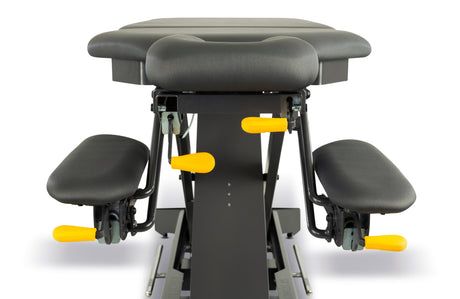What is a TheraTogs “Wunzi” System?
The Wunzi is an innovative TheraTogs system for infants, crafted to assist children from their first days up to 24 months who require support for posture, sensorimotor stimulation, or neuromotor rehabilitation. It’s crafted for easy application on a child, and its user-friendly design makes it a breeze for caregivers. Mimicking the popular “onesie” style commonly worn by infants, the Wunzi is aptly named and uniquely tailored for the little ones. Notably, it stands as the sole neuromotor rehabilitation system exclusively developed for infants. Additionally, all components of the Wunzi are free from latex.
How can I determine if the Wunzi is an appropriate choice for my child or for a child under my care?
From birth to age three is a crucial period for addressing any signs of developmental delays. A trained therapist or a vigilant caregiver can spot these delays by comparing them to typical early baby milestones. It’s important to note that neuromotor development is closely linked to sensorimotor development. A Wunzi is suitable for children or clients under 24 months who show signs of motor or sensory developmental delays. These signs may include difficulty in maintaining symmetrical body or head positions, challenges in holding steady head, trunk, or hip positions, an inability to regain balance during usual movements, low muscle tone or “floppiness” in the trunk, and a positive response to being hugged and held in age-appropriate postures.
In what sizes is Wunzi available?
The Wunzi comes in five different sizes, catering to children who weigh approximately 7 to 26 pounds (around 3 to 12 kilograms). It is suitable for newborns and can be used up until roughly 24 months of age.
What specific clinical conditions or symptoms indicate that using a Wunzi would be beneficial?
The Theratogs Wunzi can be effectively used for a variety of clinical conditions and symptoms. These include Hypotonia, which is characterized by reduced muscle tone, and Cerebellar Ataxia, a condition that impacts coordination. It’s also suitable for children with Diplegic and Hemiplegic Cerebral Palsy, both of which affect muscle control and coordination. Children with Athetosis, known for causing involuntary movements, can benefit from it as well. Additionally, it’s helpful for infants experiencing Torticollis, a condition leading to a tilted or twisted neck, and those who have suffered a Brachial Plexus Injury, impacting arm and hand movement. Lastly, the Wunzi is beneficial for children showing signs of Developmental Delay, assisting in their growth and motor skill development.
Does the Wunzi come with guidelines for dressing and usage?
The fundamental Wunzi system is straightforward to use. However, basic instructions are included in the package, and there is also an instructional video available under the Video tab.
How do I measure my child or client for a TheraTogWunzi?
Please refer to the sizing table on the Remington Medical Wunzi page.
Can the Wunzi be worn over a diaper, and is it designed for everyday use?
The Wunzi is intentionally crafted to fit over a diaper—indeed, it’s advised not to use the Wunzi without a diaper! Its soft foam surface is kind to an infant’s skin, and the special stretch fabric composite is designed for comfort, allowing it to be worn for as many hours a day as necessary.
Is it possible to use a Wunzi for my child or client who has a G-tube?
Absolutely, you can. The Wunzi is crafted from our patented and unique GoldTone™ material, which allows for trimming or perforation without any fraying or loss of functionality. Additionally, the garment’s Velcro-sensitive surface can be utilized to securely position the G-tube.
How should I wash and maintain my Wunzi?
The Wunzi system is designed to be machine washable on a gentle cycle and should be washed at least once a week without any detergent. Extra care should be taken when handling the garments while they’re wet, as the foam’s soft and gentle properties also make it susceptible to nicks or chips when damp. Comprehensive care and washing instructions in English are provided with your system. Additionally, care instructions in Spanish can be found under the documents tab on this product page. For any specific product care inquiries, you should reach out to our support team.

